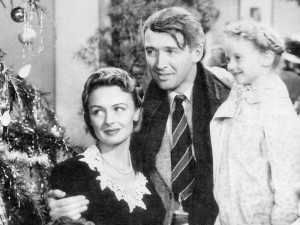Last month I got a modest but much-appreciated birthday gift — appreciated because the giver knows I love brief historical adventures. The gift was a booklet, entitled Remember When . . . 1942.
That’s my birth year, back in the Pleistocene Epoch.
The publisher, Seek Publishing, makes editions for every year from 1920 through 2001. Each is a collection of photos, magazine ads and factoids that evoke memories of that year. I’m not sure 10-year-olds would get as much of a kick out of “Remember When . . . 2001” as I did out of my birth-year “KardLet,” as the company calls them, but there may well be some really inquisitive pre-teens out there.
The booklets are a bit of a misnomer, since I obviously don’t remember a lick from 1942. My first memories are of a cross-country train trip with my mother and my dog at age 4. But the gift-giver wouldn’t have known that.
Remember When . . . 1942 opens with a saying: “The richness of life lies in the memories we have forgotten.” Something forgotten is a memory? That’s a puzzler. It becomes one, I guess, once it comes back to mind.
(I was a literalist, even as a tot.)
Nostalgic journeys are sure to highlight the ridiculously low cost of living “back when.” Indeed, the typical American house in 1942 cost $3,775, a new car $920, and a movie ticket 30 cents.
A postage stamp set you back 3 cents, your loaf of bread ran you 9 cents, and — if your kid was smart enough — you could get him into Harvard University for $420 in tuition per year. (I say “him,” because the school wouldn’t admit girls as undergraduates until 1973.)
Of course, the average American’s yearly income in 1942 was $1,885, so $420 was a big chunk of change in those days.
What jumps out at you in the ’42 KardLet is the rosy-cheeked wholesomeness of the illustrations: smiling kids, smiling parents, even smiling soldiers. There was, after all, quite a world war going on. Uncle Sam, rolling up his sleeve for a fight, isn’t smiling, but he has a determined look on his face.
These sunny illustrations were standard fare in that era, but looking at them now, I’m struck by the total absence of people of color in the photo collages and vintage advertisements. It pains me to say it now, but — growing up in an almost-all white suburb of Cleveland, Ohio, in the 1940s and ’50s, I didn’t think there was anything out of the ordinary about this. Maybe even some in the “Negro” part of town back then didn’t either. It was the way it was.
Inside the booklet’s covers, you see some images of the period that would likely baffle, or at least astonish, today’s generation.
A clunky movie projector, loaded with celluloid film.
A ready-to-heat Swanson TV dinner, with separate compartments for braised beef, peas, and corn.
A woman, smiling as always, wearing an “I Like Ike” button. I’m pretty sure this one’s out of whack, historically. Dwight D. Eisenhower, whom his friends called “Ike,” was commander-in-chief of Allied forces fighting the Nazis and Japanese, but I don’t think the buttons showed up until a decade later, in 1951, when a citizen groundswell helped convince Eisenhower to run for president.
Oh well, I said the booklet was interesting, not always historically accurate.
Eisenhower won in a landslide, and most Americans continued to like Ike through two four-year terms as chief executive.
Also shown is a soda fountain, labeled “Old Fashioned Phosphates — Ice Cold.” This may take some ’spainling:
The sodas weren’t soft drinks such as Coca-Cola and Sun Crest Orange pop. (I threw the latter in as relic of my childhood, when soda was “pop” in the Midwest.)
These sodas, concocted before your eyes by “soda jerks” — who usually weren’t jerks at all — consisted of vanilla ice cream, flavored syrup, and fizzy carbonated water, squirted from a pressurized dispenser right in front of you. With a long spoon, you scooped out the ice cream, which had absorbed a good deal of the syrup’s flavor. And with a straw, you sipped the frothy-sweet liquid, down to the last drop.
Sometimes a soft drink substituted for both the syrup and the carbonated water to make, in the case of root beer, a “root beer float.” If this makes you thirsty, I refer you to a detailed, and quite fascinating, story about all things root beer by my VOA colleague, Chris Cruise.
I haven’t forgotten to tell you about phosphates. These weren’t packets of salty, acidic chemicals. But phosphoric acid was part of the recipe. Phosphates, which had no ice cream, were sort of soft drinks with a kick. (I speak of them in the past tense, since I haven’t seen, let alone tasted, one in 40 years. I read somewhere that high phosphate levels in the blood pull calcium from bones, so maybe some agency banned the drinks.)

There was a lot going on, chemically, when a phosphate drink was created. This was one of the ingredients. (artofdrink.com)
Phosphates were made from carbonated water, flavored syrup, and a couple of dashes of the phosphoric acid, sprinkled from a shaker. The maker then added ice and stirred the concoction briskly.
Back on the wholesome front, the KardLet includes ads that you’d call corny today:
For Campbell’s Soup, showing a smiling housewife and one of the rosy-cheeked “Campbell Kids” tugging on a manual rowing machine. Next to him (her?) is a little ditty:
I think it’s wise to exercise.
I do it every day.
I work up quite an appetite,
And that’s when soup’s okay!
For Columbia Records: A photo of Arthur Rodzinski, “brilliant conductor of The Cleveland Orchestra,” with his testimonial and those of other famous conductors about the fidelity of the company’s vinyl phonograph records. “New Lamination Process brings you an amazingly lifelike new brilliance of tone; 55.3% Less Surface Noise,” the ad reads. Wonder how they calculated that?
For the Corn Products Refining Company: An ad showing mounds of fruit, spilling cornucopia-like from Uncle Sam’s hat, extolling the merits of dextrose sugar. “Dextrose is an ALL-American sugar,” the ad states, proudly. “The sun is the source of energy . . . the energy of sunshine is crystallized in Dextrose sugar.” I’d have to check with our science editor, but I suspect a step or two was missed there.
The Uncle Sam hat is one of many examples of the booklet’s patriotic bent. This was, after all, the year following the sneak attack on U.S. naval facilities at Pearl Harbor, Hawaii, that brought the United States into the Second World War.
Yet another dextrose-sugar ad shows a U.S. fighter jet, firing down upon — and destroying — enemy tanks. “Dextrose is a Selected Sugar in the Rations of the U.S. Army,” it proclaims. How this relates to accurate strafing from the air is left to one’s imagination.
The Anaconda Wire & Cable Company’s ad shows a U.S. bomber and an alarming inset picture in which a cable is shown coming loose. “Wire failure could be fatal,” reads the ad. “They can’t let it happen here!”
The Federal truck-building company created an ad in the Kardlet that spotlights a red Federal Truck. “Speed the Materials of War in Victory Bound Convoys,” it reads.
And there’s a promo for the 1942 Warner Bros. movie “Wings for the Eagle”: “To the workers of America’s fighting aircraft industry . . . men and women devoted to the new gospel — We can! We must! We will! . . .Warner Brothers respectfully dedicate ‘Wings for the Eagle.’”
Victory and godliness were very tight at the time.
According to the KardLet, life expectancy in 1942 was 62.9 years. Hah! I beat it.
Again, I don’t remember any of this, but while my mother was lugging me around in 1942:
• Gasoline rationing went into effect.
• Instant coffee and raisin bran cereal were introduced.
• The government launched the Manhattan Project, creating and testing the atomic bomb that, three years later, would help end the war.
• Auto manufacturers began fashioning war materiel instead of cars. It would be 1945 before another new American car rolled off the line.
• Actor Harrison Ford; singers Barbra Streisand, Tammy Wynette, and Aretha Franklin; and boxer Muhammad Ali were born. Come to think of it, those folks are looking a little long in the tooth, which is why you’ll find no mirrors in my cubicle.
In this year of 2011, when “Headlines” (a Halloween rap!), “Long Hot Summer” (country), and “Moves Like Jagger” (pop) top the music charts, you probably won’t remember these tinkly, sentimental hits. But “White Christmas,” “I’ve Got a Gal in Kalamazoo,” and “Jingle, Jangle, Jingle” were real toe-tappers in 1942. Particularly catchy, or lame, depending on your point of view, was the “Kalamazoo-zoo-zoo” line.

There weren’t gory Halloween films or soft-porn flicks on the readily available big screens of the nation. But you could watch Humphrey Bogart, as exiled American Rick Blaine, deal with love and wartime intrigue in “Casablanca;” or Bambi the white-tailed fawn cavort in the Walt Disney movie of that name (“Bambi,” not “White-Tailed Fawn”); or B-list actor Robert Cummings, as aircraft worker Barry Kane, fight to clear his name when fascist sympathizers frame him for an act of sabotage.
I don’t miss much that’s shown in Remember When . . . 1942. Well, maybe the ice-cream sodas.
But — call me romantic — I miss the sweetness, the optimism, even the naïveté of those times. I’m not sure we’re better off knowing everything about everything and everyone.
Of course, few Americans who were not middle- or upper-class, or white, had the luxury of naïveté then — or now.
Living in the past doesn’t get the work done. But if there were a 1942 app, I’d buy it.
After I buy a new iPhone.
Ted's Wild Words
These are a few words from this posting that you may not know. Each time, I'll tell you a little about them and also place them into a cumulative archive of "Ted's Wild Words" in the right-hand column of the home page. Just click on it there, and if there's another word that you'd like me to explain, just ask!
Concoction. A food item made, sometimes without benefit of a recipe, from many ingredients.
Cornucopia. A horn of plenty, from which spill such things as fruit, flowers, and corn.
Corny. Trite, banal, overly cute or sentimental.








3 responses to “Remembering 1942, Sort Of”
This is a great column. Having been born in 1954, I remember the lingering fragrance of some of the innocence you describe (although it was innocent only on the surface). As a little school kid, America was the hope of the world, the savior of Europe, etc. That view, however, was forever crushed first by JFK’s assassination, then love-ins, Vietnam, Kent State, Students for Democratic Society, race riots, the horrible deaths of Martin Luther King and Bobby Kennedy, and Richard Nixon. By my second year of college, when Nixon resigned, not one drop of innocence remained, replaced by foul cynicism. The stench of the sixties and seventies has forever polluted our world. What a shame.
Having been born in 1941 before Pearl Harbor (April), I remember so much of those innocent times. You take me there with your wonderful writing. Thanks. (Barbara) Willow Drinkwater
Many of these items are fond memories…and a few still linger in various closets and boxes. Since we went to the same schools (ah, Lakewood) we undoubtedly went to lots of the same places!